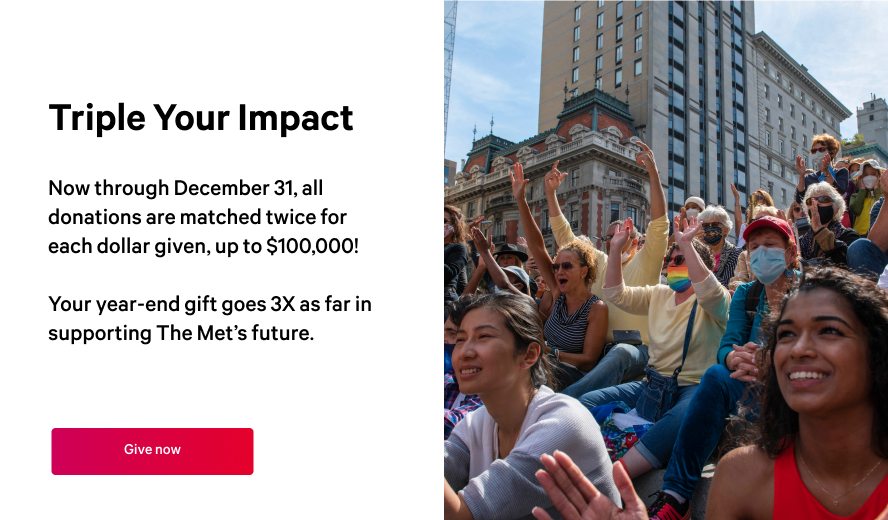New York City can be hard.
Why are people drawn to it? One artist who made it her home can show us.
If You Can Make It Here …
Neel grew up in a small town in Pennsylvania and spent a formative year in Cuba before moving to NYC in 1927. She worked there for 60 years, raised a family, and is now known for her groundbreaking portraits and commitment to social justice. Here, in conjunction with The Met’s exhibition Alice Neel: People Come First, we see New York—and New Yorkers—through her eyes.

City Life
New York was Neel’s greatest muse: She lived and worked in the city, whether it was the Bronx, Greenwich Village, Spanish Harlem, or the Upper West Side. Her expansive social circle included artists, celebrities, and neighbors—some became lifelong friends and subjects.
— Alice Neel: They Are Their Own Gifts (1978)One of the reasons I painted was to catch life as it goes by, right hot off the griddle … painting specific people and painting all the happenings. After all, I represent the 20th century—I was born in 1900, and I’ve tried to capture the zeitgeist.
Working from home was a necessity for Neel. Her apartments were also her studios, and her life and art were completely intertwined. A view of the street from inside her own home—in this case, the intersection of 107th St and Broadway—was a favorite subject.
In this early cityscape, Neel used a range of shapes to create a sense of place—in this case, the curving Harlem River, which runs between Manhattan and the Bronx. Even in a painting without people, she captured the swirling, slightly manic energy of the city.
This portrait of Spanish Harlem’s beloved La Marqueta shows Neel’s affection for the neighborhood’s daily life. Her artist’s eye was drawn to the dynamism of the 5-block fish market that catered to the local Puerto Rican, Cuban, and Dominican populations.
I have never felt strange in East Harlem because of the fine and hospitable humanity I find all around me. … East Harlem is like a battlefield of humanism, and I am on the side of the people there.— Neel quoted in “Alice Neel Paints Scenes and Portraits from Life in Harlem” (1950)

Social Networks
Neel recognized the dignity of all people, choosing to paint individuals from diverse walks of life. Many of her subjects—including children, immigrants, people of color, pregnant women, and members of the LGBTQ+ community—were also part of her overlapping personal and professional networks.

There isn’t much good portrait painting being done today and I think it is because with all this war, commercialism and fascism, human beings have been steadily marked down in value, despised, rejected and degraded.— Neel quoted in the Daily Worker (1950)

Intersections
Neel’s artistic practice tied directly to the causes she believed in: civil rights, feminism, economic equality. While many of her peers earned critical acclaim working in more abstract styles, Neel’s commitment to depicting human subjects with radical candor set her apart. Her activism also landed her on the FBI’s watchlist in the 1950s.

In interviews, Neel described attending the 1936 protest against fascism and genocide that she documented in this painting. When she wasn’t using her art as a platform, she could be found marching for justice. In this case, she did both.
James Farmer, civil rights activist and cofounder of Congress for Racial Equality (CORE), was arrested for protesting against racial injustice at the 1964 World’s Fair, in Queens. Neel painted him that same year, showing him as focused, determined, and intense.
Neel probably never met the prominent organizer and socialist feminist Ella Reeve “Mother” Bloor, but she clearly admired “the matron saint of the American Communist Party.” This painting shows Mother Bloor resting inside her coffin, surrounded by mourners.
I paint to try to reveal the struggle, tragedy and joy of life.— Neel quoted in the New York Times (1976)

What Alice Knew
There’s never been one New York. Alice Neel’s portraits and streetscapes show us her version: a vibrant city made up of ugliness, struggle, and brutality, but also strength, resilience, and beauty—the constant hustle. Every corner has a story.
What Neel understood better than most was that the people make the place—the borough, the neighborhood, an individual city block. And above all, she recognized that even among the millions, every person is unique, worthy of being portrayed with dignity and agency.
Whether you’re a third-generation New Yorker or a recent arrival, someone who’s visited once or who moved here and never looked back, Alice Neel’s paintings remind us that New York itself is a composite portrait—of all of us.
I like to paint people who are in the rat race, suffering all the tension and damage that’s involved in that—under pressure, really, of city life and the awful struggle that goes on in the city.—From the film Alice Neel (2007)
Visit Alice Neel: People Come First in person, the first museum retrospective of Neel’s work in New York City in two decades (on view March 22 through August 1, 2021).
Share
-
https://cd-review.metmuseum.org/primer/alice-neel
https://cd-review.metmuseum.org/primer/alice-neel
Plan Your Visit
Exhibition Details
-
Dates March 22, 2021–August 1, 2021
-
The Met Fifth Avenue 1000 5th Ave, New York City
-
Alice Neel: People Come First Galleries 899

Image and Video Credits
Primer made possible by

Supported by

and the Director's Fund.
All artworks © The Estate of Alice Neel
© 2021 The Metropolitan Museum of Art
Alice Neel: People Come First credits
The exhibition Alice Neel: People Come First is made possible by the Barrie A. and Deedee Wigmore Foundation.
Major support is provided by the Adrienne Arsht Fund for Resilience through Art.
Additional funding is provided by Angela A. Chao and Jim Breyer, Agnes Gund, and the Jane and Robert Carroll Fund.
It is organized by The Metropolitan Museum of Art in association with the Guggenheim Museum Bilbao and The Fine Arts Museums of San Francisco.






